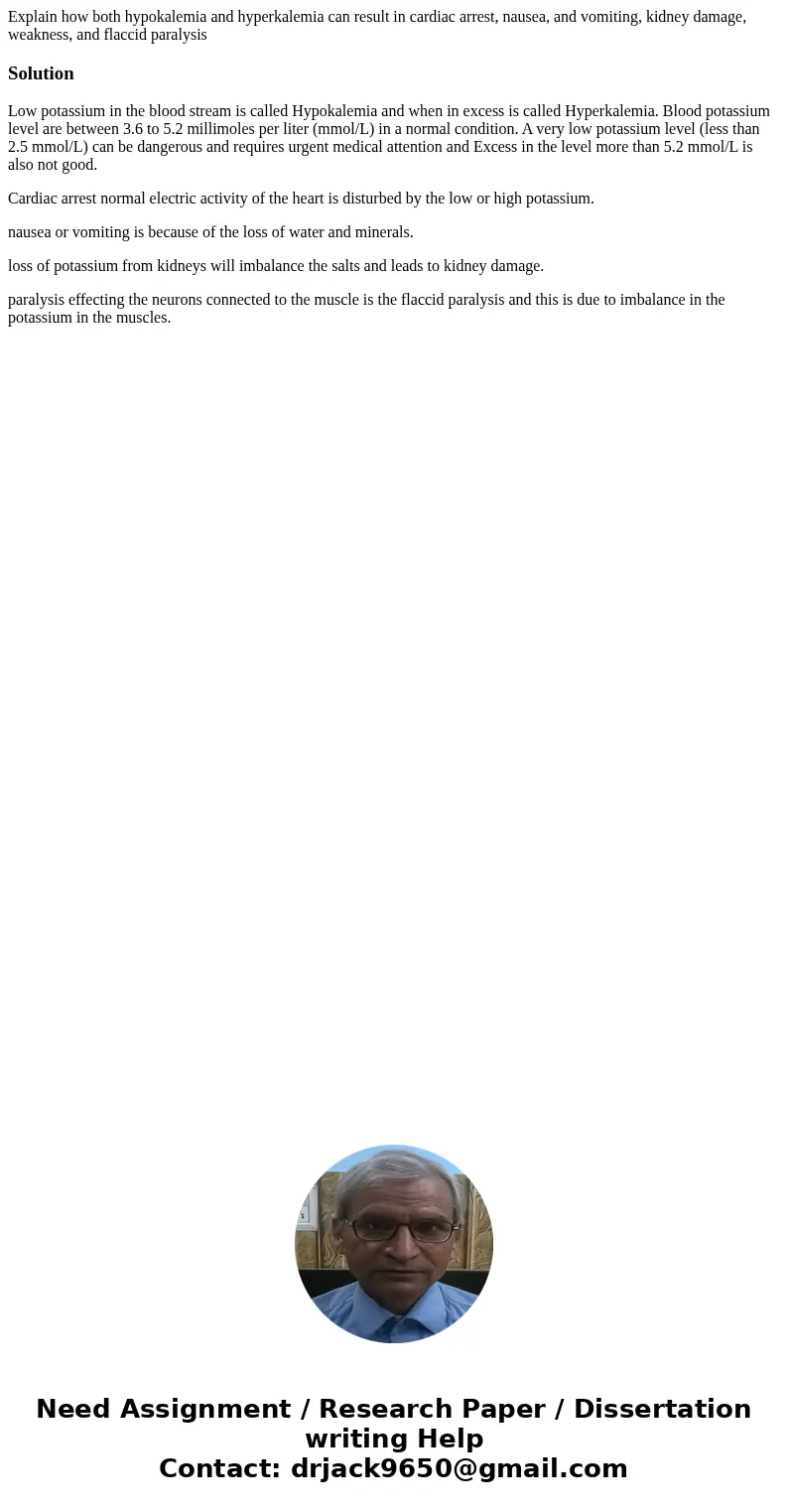Explain how both hypokalemia and hyperkalemia can result in
Explain how both hypokalemia and hyperkalemia can result in cardiac arrest, nausea, and vomiting, kidney damage, weakness, and flaccid paralysis
Solution
Low potassium in the blood stream is called Hypokalemia and when in excess is called Hyperkalemia. Blood potassium level are between 3.6 to 5.2 millimoles per liter (mmol/L) in a normal condition. A very low potassium level (less than 2.5 mmol/L) can be dangerous and requires urgent medical attention and Excess in the level more than 5.2 mmol/L is also not good.
Cardiac arrest normal electric activity of the heart is disturbed by the low or high potassium.
nausea or vomiting is because of the loss of water and minerals.
loss of potassium from kidneys will imbalance the salts and leads to kidney damage.
paralysis effecting the neurons connected to the muscle is the flaccid paralysis and this is due to imbalance in the potassium in the muscles.

 Homework Sourse
Homework Sourse